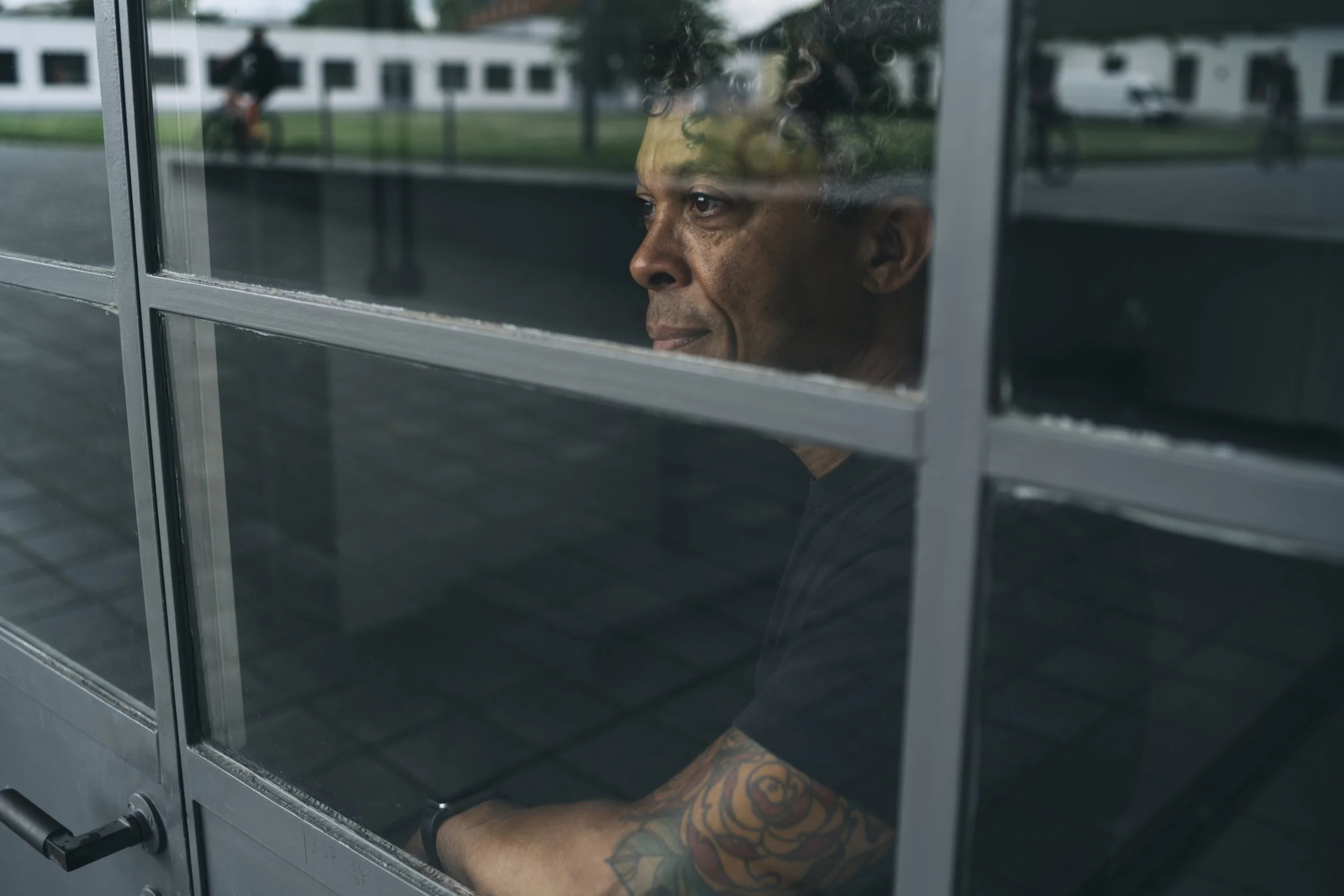Philosophy
The Punk Professional
Elements of counter-culture energize the creative process. That’s what drew me to punk music - the idea that rules should be broken to achieve an innovative outcome. I call this the punk professional attitude. It is the same attitude that was present at the Bauhaus which shaped the foundation of modern design as we know it today. This attitude has been my default; to look at life through a different filter. To create beyond what is expected. Seeing things differently, thinking differently and trusting it can be turned into something that matters - this drives me forward.

Driven by human values.
Image by Agenda Brown - Visual Marvelry
There can be unison between professional goals and personal values.
Beyond being able to enjoy the work that I do, I also want it to contribute to a better future: one that is more humane, safe and better protected.
80% of sport shoes sold never see the purpose for which they were designed.
It raises the question, what do people really need? Are we giving them something that propels mankind forward, or something that simply adds to the bottom line? My objective is to bring humanity back to design, for all that it is, and all that it can do. To shape products and experiences that make a positive impact on society, and how we find our way through. There is no going back to a subsistence, non-mobile society, but we should be mindful of the impact our designs have on health and world balance.
So what can we improve that’s right in front of us? Future-proof technology is like timeless design: it serves a distinct purpose. We have shown we were more than ready for the ‘democratization’ of the video conference; the pandemic simply pushed the button. The immediate improvement in air quality at the onset of COVID-19 is proof positive of what is achievable in the short term. So let’s continue this momentum. I believe design should first be led by what is essential for humans, and humanity. A doctor once commented that she was going home to work on her immune system, by reading a book. We need to be safe, but we also need to remember the value of being human, and feed that value.
In his piece ‘Post Corona World’, German Futurologist Matthias Horx wrote: We will be surprised that even the loss of assets due to the stock market crash does not hurt as much as it felt in the beginning. In the new world, wealth suddenly no longer plays the decisive role. Good neighbours and a blossoming vegetable garden are more important.
This is the moment where we should ‘dial things back’ and be mindful of the ultimate goal: humanity. What we do as designers and purveyors of technology plays a part.
Knowledge of the past is key.
Design vision requires an extreme appreciation for both the old and the new. It’s more than observing what’s around us, it’s knowing what came before: to know where you’re going, you have to study where you’ve been. When working with clients, a deep knowledge of the past is key to informing the future direction of a brand. All good work has to start with three essentials: research, empathy and selflessness, and unfold with asking the right questions.
Image by Agenda Brown - Visual Marvelry
Listen for the notes that aren’t there.
We learn from jazz that some of the most important notes are those that are left unplayed. When we ask questions, we must listen well for the answers that are not immediately given. Authentic work will always emerge from a process of discovery. Empathy for the end user, the manufacturing condition and the business need is vital at every stage of the process. Relating to all stakeholders, and ensuring the outcome fulfils their expectations, is paramount. Selflessness allows us to focus: remembering that the end result is not designed for you, but rather, for others, leaves us open to a purer design process.
Photo by Pernille Sandberg
From refugee crises, climate change, and COVID-19, to populism and autocratic regimes, the 21st century presents a challenging global environment. And a unique opportunity. The traditional formula for success will no longer stand. Feeding an insatiable consumer desire for unnecessary products on a mass scale will cost us all our future. As designers and entrepreneurs, we have a responsibility to uncover what is truly meaningful for people, and how to supply it. If we pay attention to humanity and the environment, the road ahead becomes clear. Aspirations that aim higher than simply sustained dollar growth will inspire natural creativity for a truly valuable, common goal.
Humanity.
This is the aspiration that will shape my future.
In 2017 I discovered The Copenhagen Letter, a call to the design community to exploit the design superpower for good in the world and humanity.

Images by Agenda Brown - Visual Marvelry
DBC MANIFESTO
Design everything.
Design is a vocation of thinking. That means it can be used to influence many things not only objects. Both experiences as well as the pathway to realising them have to be designed. Use the design superpower to influence and shape every aspect of bringing an idea to life.
Make the world a better place.
Commit to real action. Act collaboratively and in unison toward shared goals that are certain to improve how humans exist in the world. Promote good health, fairness and joy. Let a zero emission mindset fuel creative, manufacturing and business goals. Institute an inclusive approach.
Bring it home.
Think of the world in the same way you do your neighborhood. Be mindful that what you decide to happen “out there” has an effect on what happens “right here”. Act professionally with empathy and compassion. Act with self love; consider your own humanity. Be driven not only by what feels good, but also what IS good.




